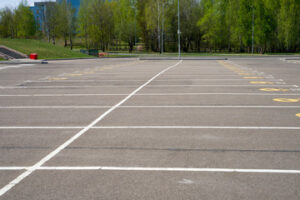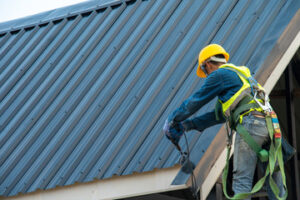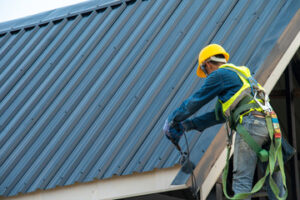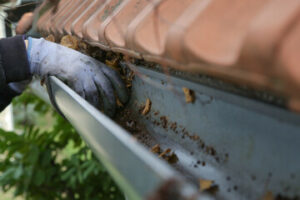Sealcoating is a great way to extend the life of your asphalt driveway or parking lot. But you must select a professional contractor who can provide an excellent results.
You also need to pick a day when the weather conditions are perfect for sealcoating. The temperatures must be warm enough to dry the sealcoat without damaging it. Visit https://www.rochesternysealcoating.com/ to learn more.

Sealcoating is an economical way to protect asphalt pavement and extend its life. However, before any asphalt surface can be protected with a new coat of sealer, it must be properly prepared. The first step is cleaning the entire area to remove any dirt, oil spills or other debris that could damage the new coating. The pavement must also be swept clean of any cracks and holes. Once the pavement is cleaned, it must dry completely before the sealer can be applied. If necessary, the contractor can use a broom to distribute water over the surface to speed up the drying process. In addition, it is important to avoid applying the sealant when rain is in the forecast, as the water can ruin the work.
The next step is identifying the issues with your asphalt. If you are unsure of the condition of your asphalt, you can have an independent professional inspection done to determine what repairs need to be made. Cracks and potholes should be filled with an asphalt patch or crack filler before the sealcoating is applied. Severely damaged areas may need to be repaired with an overlay or other costly repair method.
Before you begin the sealcoating process, get quality equipment and materials. You will need a filter pot, a spray tip, and a hose designed for the task. A hose that can handle high pressure is ideal, and you should look for one with a valve that can be controlled to control the flow of the sealcoating.
There are several different types of sealcoating available, varying in color and level of protection. Coal tar is the most common and generally considered to be the best, but it is not environmentally friendly and is banned in some municipalities. Refined coal tar is an alternative, but it doesn’t provide as much protection.
It is important to understand the difference between drying and curing when working with a sealcoat. Although the coating will be dry to the touch within a few hours, it can take several days to cure and become fully effective. Once the curing process is complete, it is safe to allow vehicular traffic onto the parking lot.
Spraying
Sealcoating restores faded asphalt to a black, shiny appearance and protects it from water, oil and other oxidizing substances. It also replenishes degraded petroleum binder and specifically formulated oils to keep your pavement from becoming brittle, drying out, cracking and crumbling.
The spraying process for Sealcoating is fairly quick and simple, although workers should wear proper PPE (personal protective equipment) when working with chemicals or hazardous materials. In addition to standard safety gear like goggles and gloves, workers should have a respirator to prevent inhaling fumes during the application process.
Before beginning the spraying process, workers should clean all areas to be sealed using a pressure washer or broom. This will remove any dirt, debris or dust from the surface to be sealed. It is important to clean these areas before sealing, because the sealant will bond best with a smooth surface.
Workers may use a variety of spray applicators during the Sealcoating process, depending on the size of the area to be coated and the type of coating being used. For example, smaller areas can be sealed with a hand squeegee or a power-spray applicator, while larger areas are often sprayed using a professional spraying machine with varying sizes of spray tips to get the desired coverage.
When choosing a sprayer, it is important to understand that the spray tip controls both the GPM (gallons per minute) and the shape of the stream of Sealcoat being sprayed on the blacktop. Spray tips with fewer GPMs will produce narrower streams for better control, while those with higher GPMs will spray wider fans for more coverage.
Regardless of the spraying method chosen, it is always recommended to apply 2 coats of Sealcoat versus one thick coat. Most manufacturers recommend this because 1 coat of Sealcoat will not protect the blacktop as well as it would with two coats.
Coal tar is another common type of Sealcoat, but it has several drawbacks that make it less appealing than other options. For example, coal tar Sealcoat is not as durable and can fade quickly, so it requires reapplication much sooner than other types of sealcoat. Additionally, coal tar Sealcoat is known to cause environmental problems. Studies have shown that it is a major contributor to polycyclic aromatic hydrocarbon levels in soil and water. As a result, many municipalities have banned this product from use.
Brushing
Sealcoating can be performed on commercial asphalt pavements, including driveways and parking lots. It helps the asphalt surface to maintain its attractive appearance for a much longer period of time than would otherwise be possible, saving money on costly repairs and resurfacing. Regular sealcoating also prevents water from penetrating the cracks and helps to restore the original black appearance of the pavement surface.
A professional asphalt technician blends the sealcoat, mixing in a variety of materials to create a durable and long-lasting product. This process is typically done by hand, using a brush or long-handled sprayer. The technician is careful to cover every inch of the surface area to ensure a complete and even coating.
Before the application of the sealcoat, the asphalt surface is broomed, scrubbed or wired where necessary to ensure that it’s clean and free from dirt, weeds and other organic matter. This is very important, as the sealcoat will only adhere to a clean and dry surface.
The asphalt is then sprayed or brushed on the top with the sealant. A skilled asphalt contractor will be able to tell when the sealcoat has been applied properly, and when it needs more.
Once the sealcoat has been applied, it is important that the area be blocked off so that people can’t walk or drive on it until it dries. This usually takes 24-48 hours depending on the weather conditions. You should put up a sign to let people know that the pavement isn’t suitable for use while it’s drying.
A clean and well-maintained parking lot or driveway can make a huge difference in the curb appeal of your property. It can attract and retain customers, and it can add value to the real estate. Regular sealcoating is the best way to protect your asphalt investment and keep it looking great for years to come. A sealcoated surface is easier to clean and looks better than cracked, faded or crumbling pavement. It’s also a smart business decision, as an unmaintained asphalt surface can cost more to repair than one that has been protected by a good seal coat.
Combination
Sealcoating is a time-consuming process, but it is very effective. It protects the asphalt from damage by elements such as UV rays, rain, and chemical spills. It also reduces the frequency of parking lot maintenance and repair, saving money in both labor and material costs. In addition, it makes the pavement look brand new and increases the lifespan of the asphalt.
The first step in the process is to block off the area where you are going to apply the sealant. You will need to have pedestrians and vehicles out of the way, as well as make sure that any perimeter sprinkler systems for grassy areas around your driveway or parking lot are turned off. You will also need to have the space blocked off for a minimum of 24-48 hours to give the sealant time to dry.
Next, the surface of your parking lot will need to be cleaned. This can be done with air blowers, brooms, and small-bristle brushes for hard-to-reach areas like in any present cracks. If your pavement has been damaged by oil or chemical spills, you will need to prime these areas before applying the sealant. This can be done by using a chemical solvent or an asphalt primer.
There are several different types of pavement sealers on the market, and each has its own unique benefits. The most common type of sealcoat is based on refined coal tar, which contains closed-ring aromatic chemicals that are very stable. Coal tars are extremely durable and do a great job at maintaining the surface integrity of asphalt and protecting it from destructive weather conditions.
Additive chemicals have been developed to enhance the performance of sealcoats by modifying the water demand, altering sand suspension, increasing flexibility, and adding resistance to salts and petrochemicals. These additives must be selected according to the manufacturer’s recommendations and incorporated into the sealcoat mixture.
When working with sealcoat, it is important to wear safety equipment such as dust masks and rubber gloves. This is because the materials used in sealcoat are carcinogenic and can be absorbed through the skin or respiratory system.








